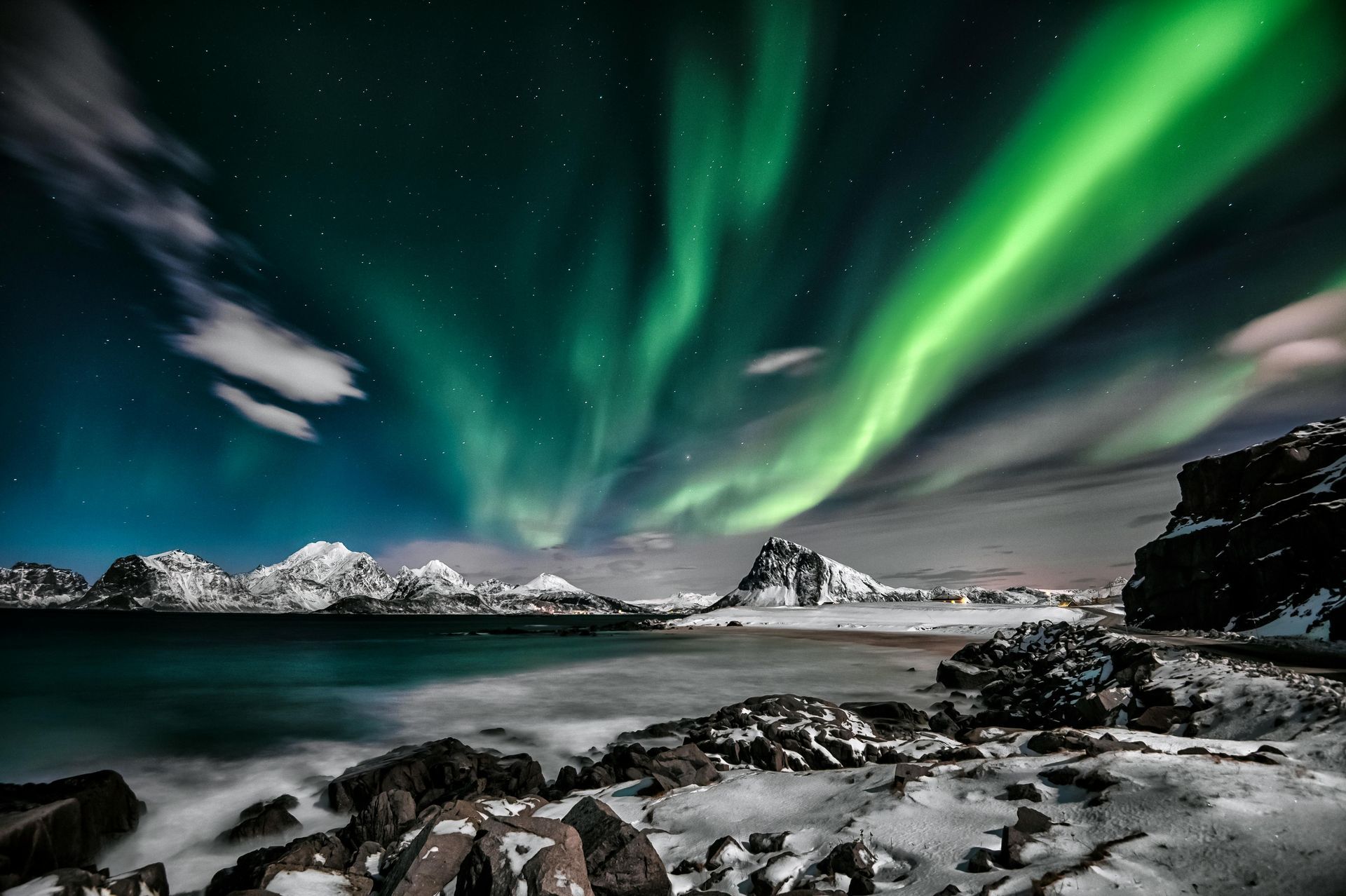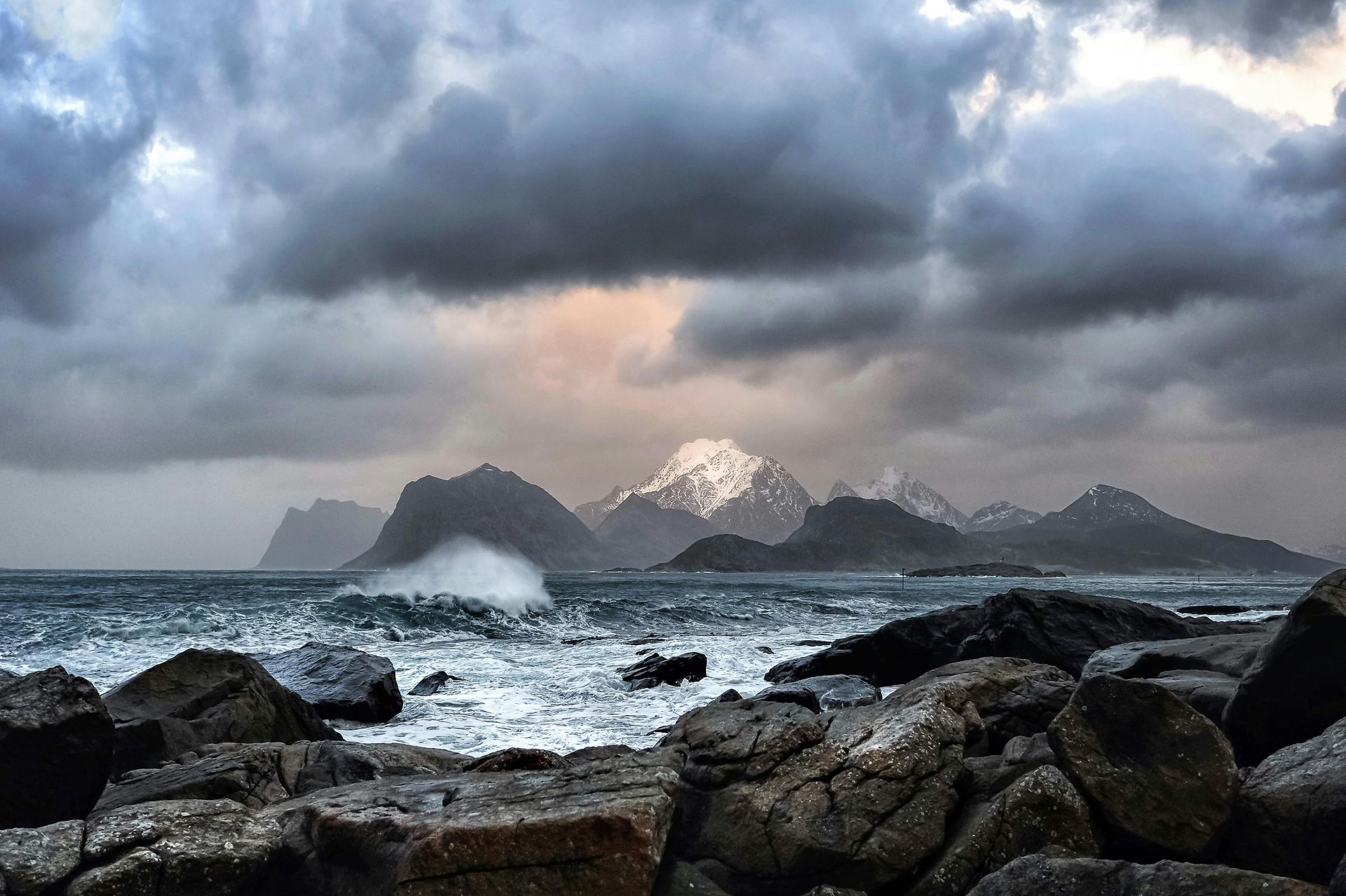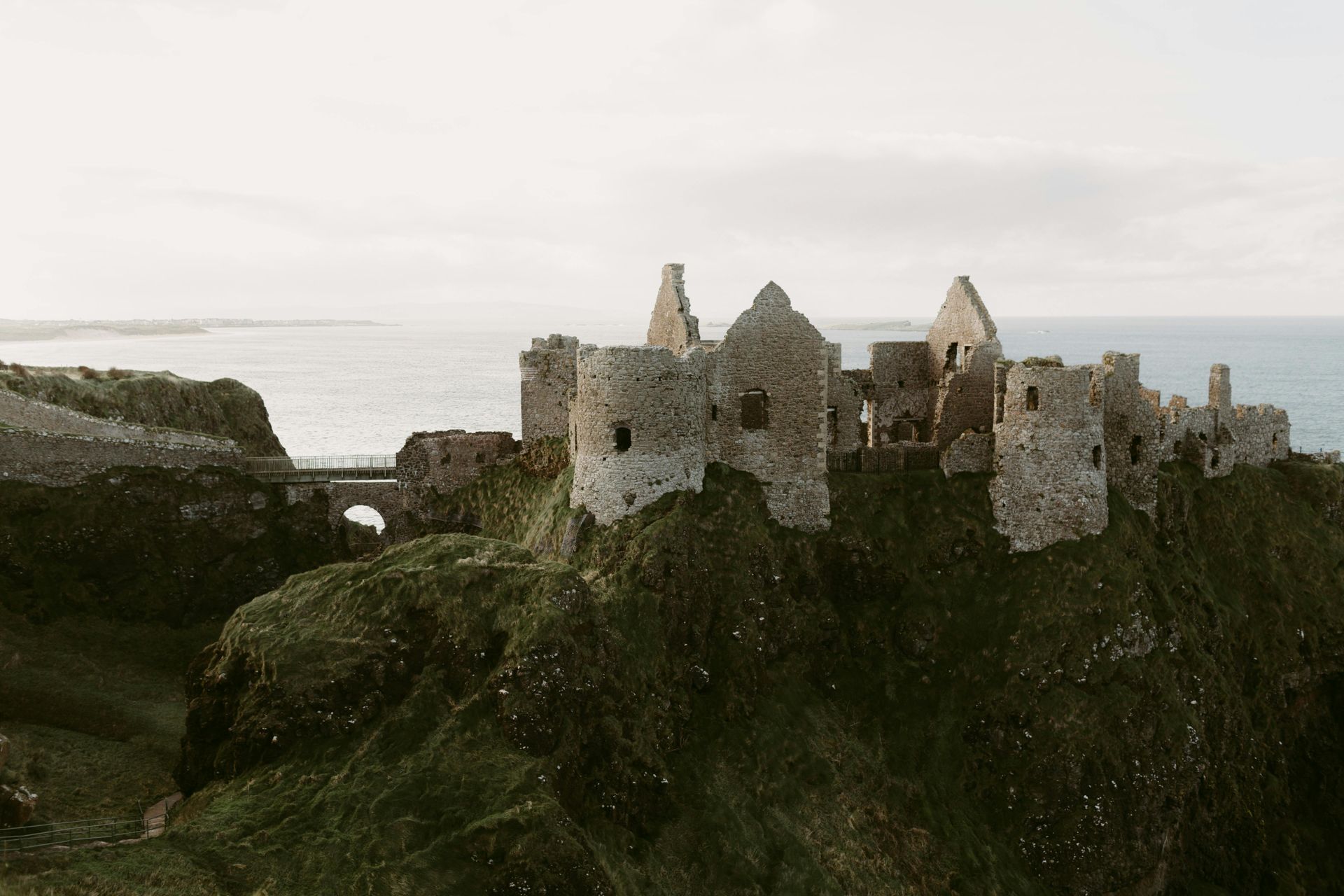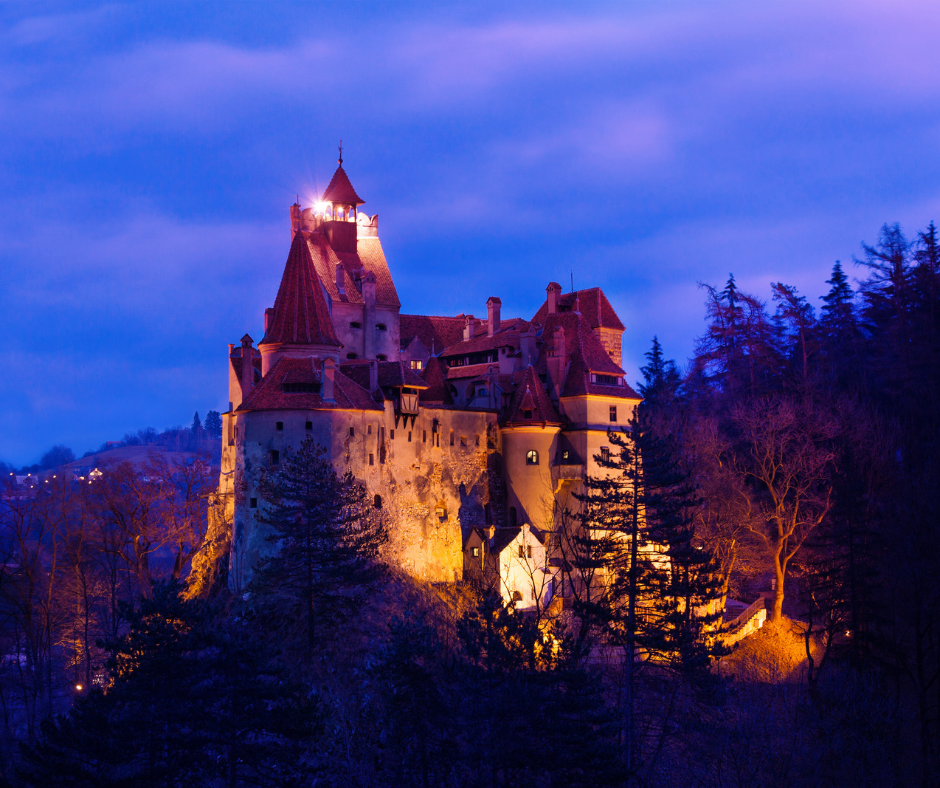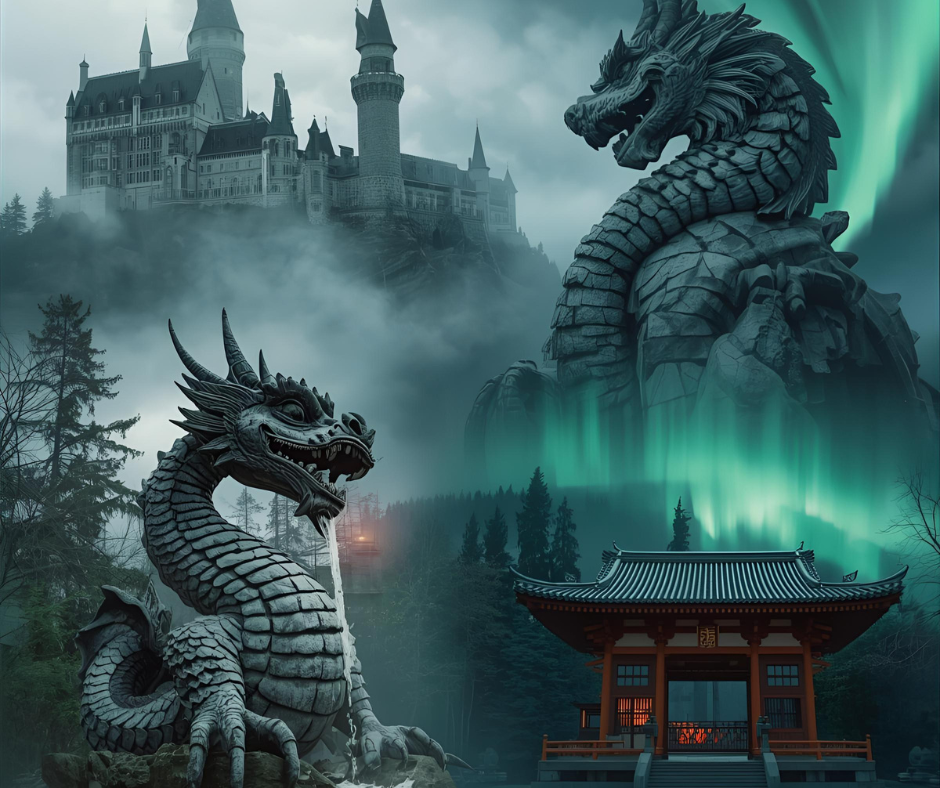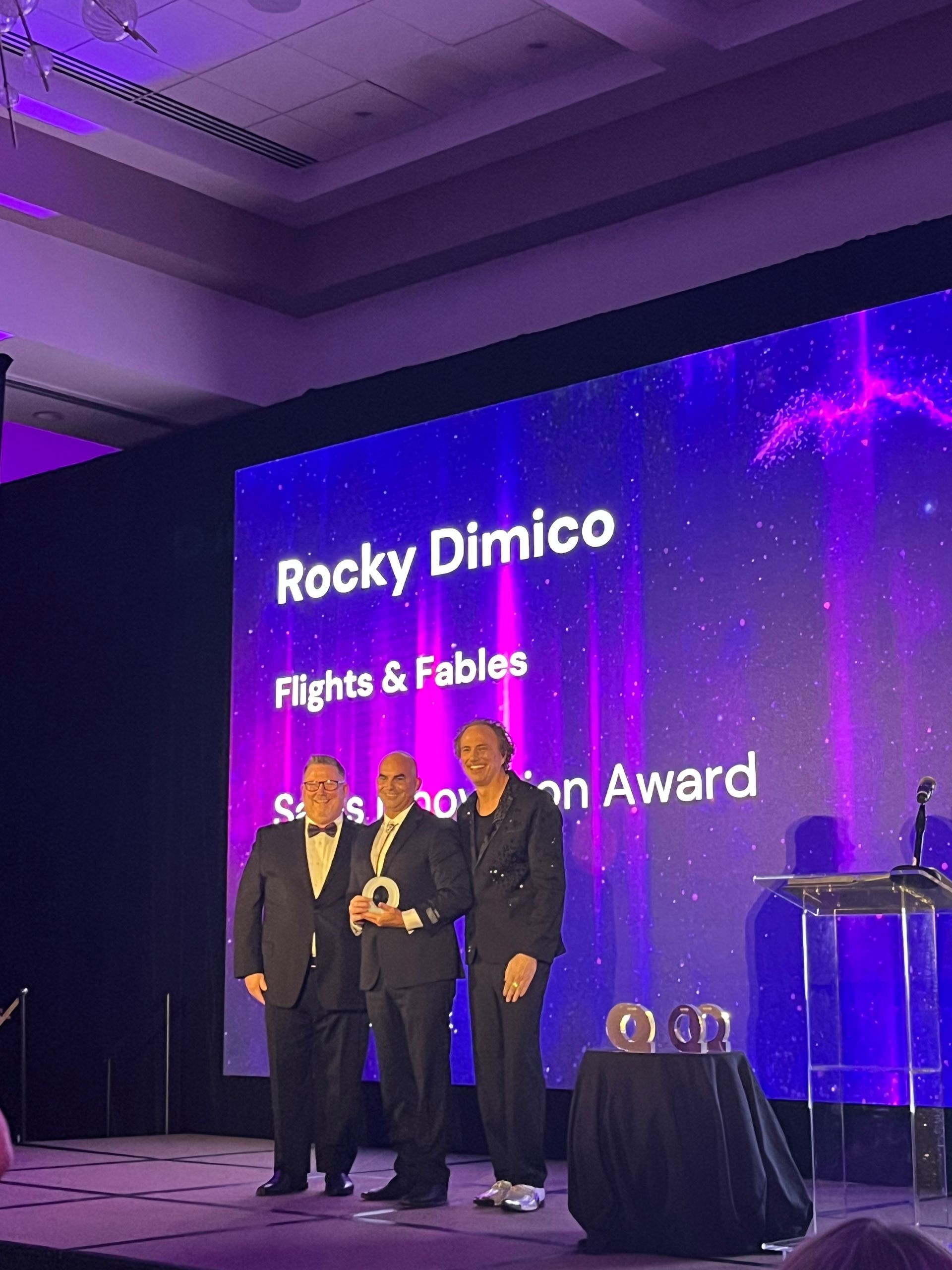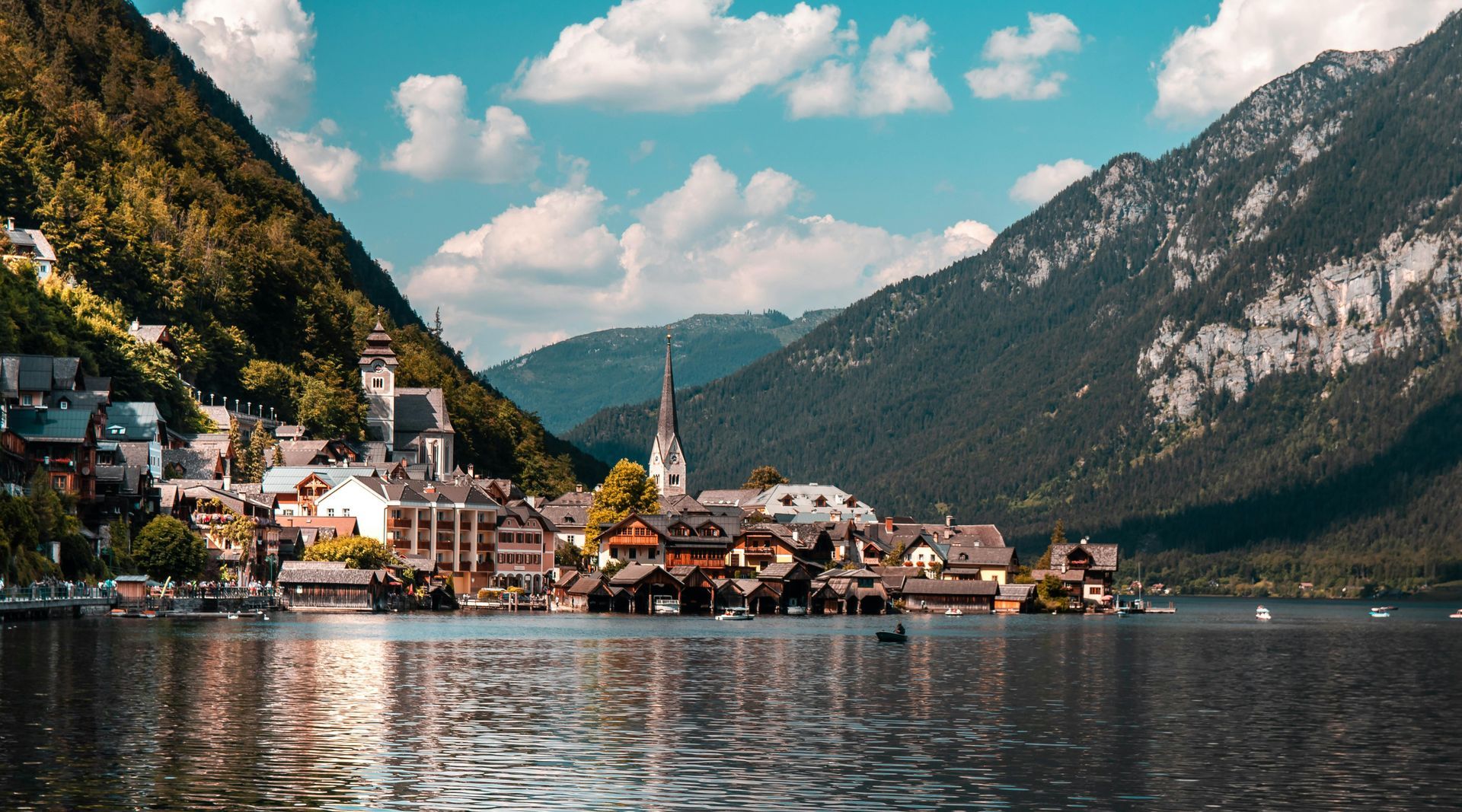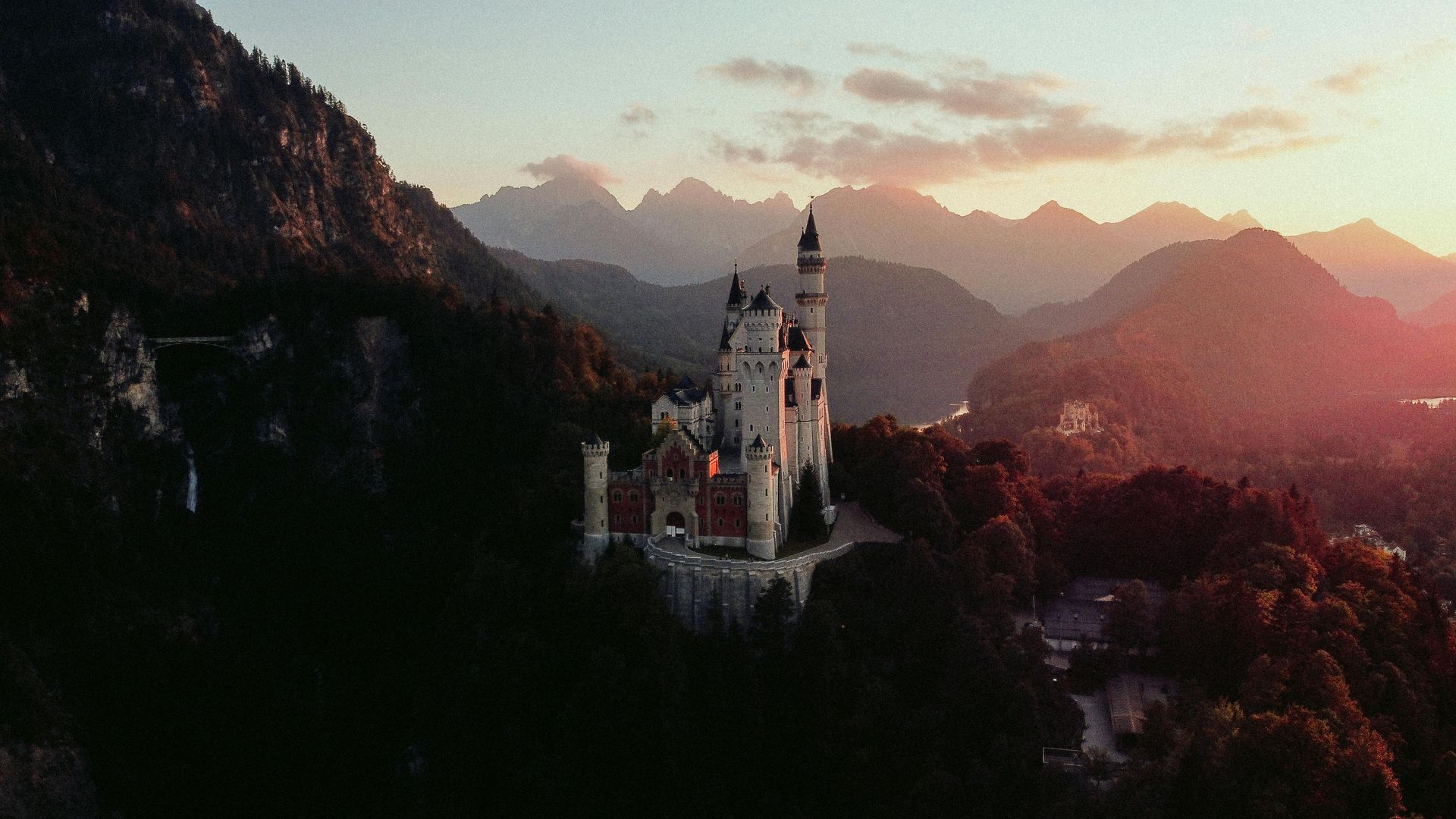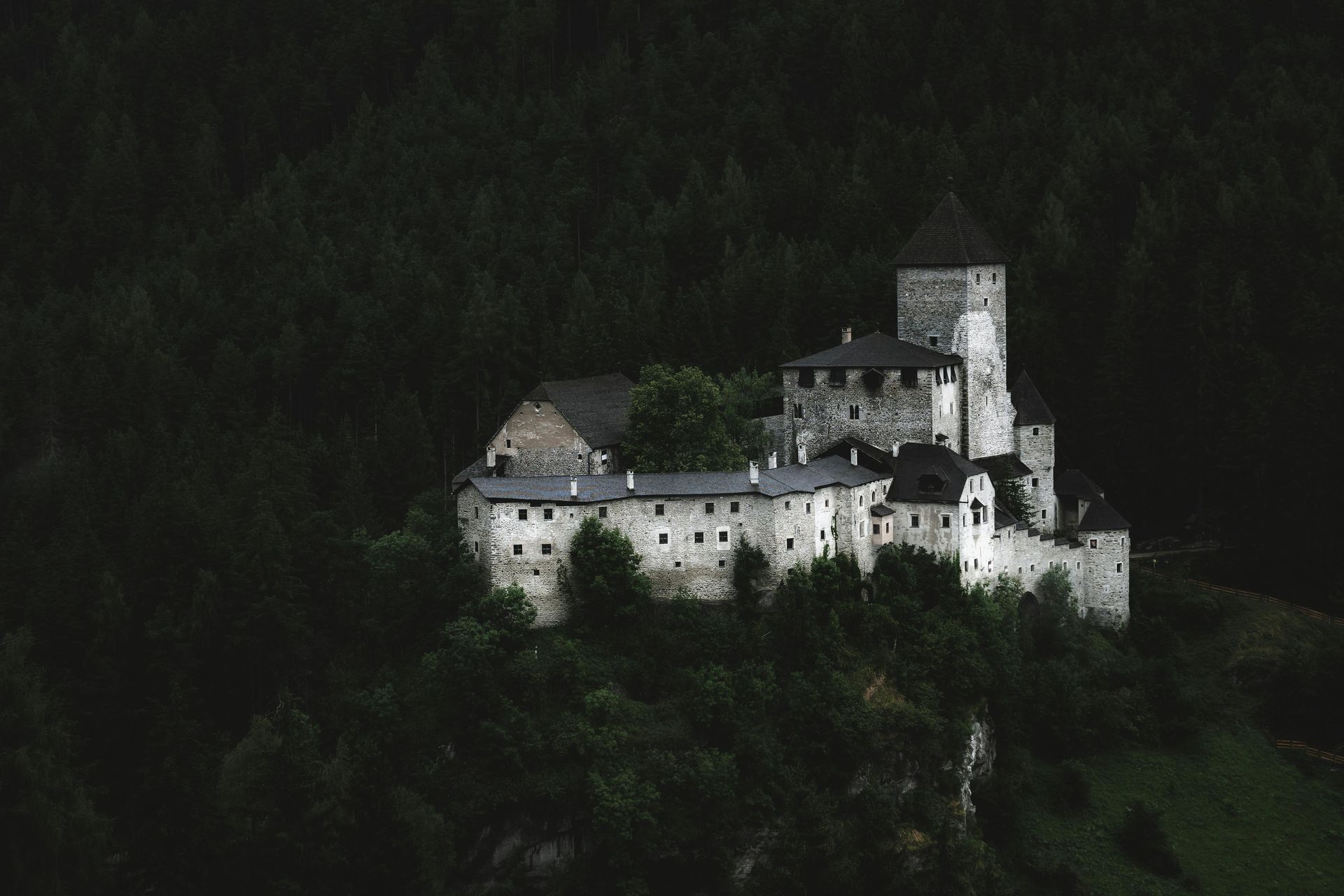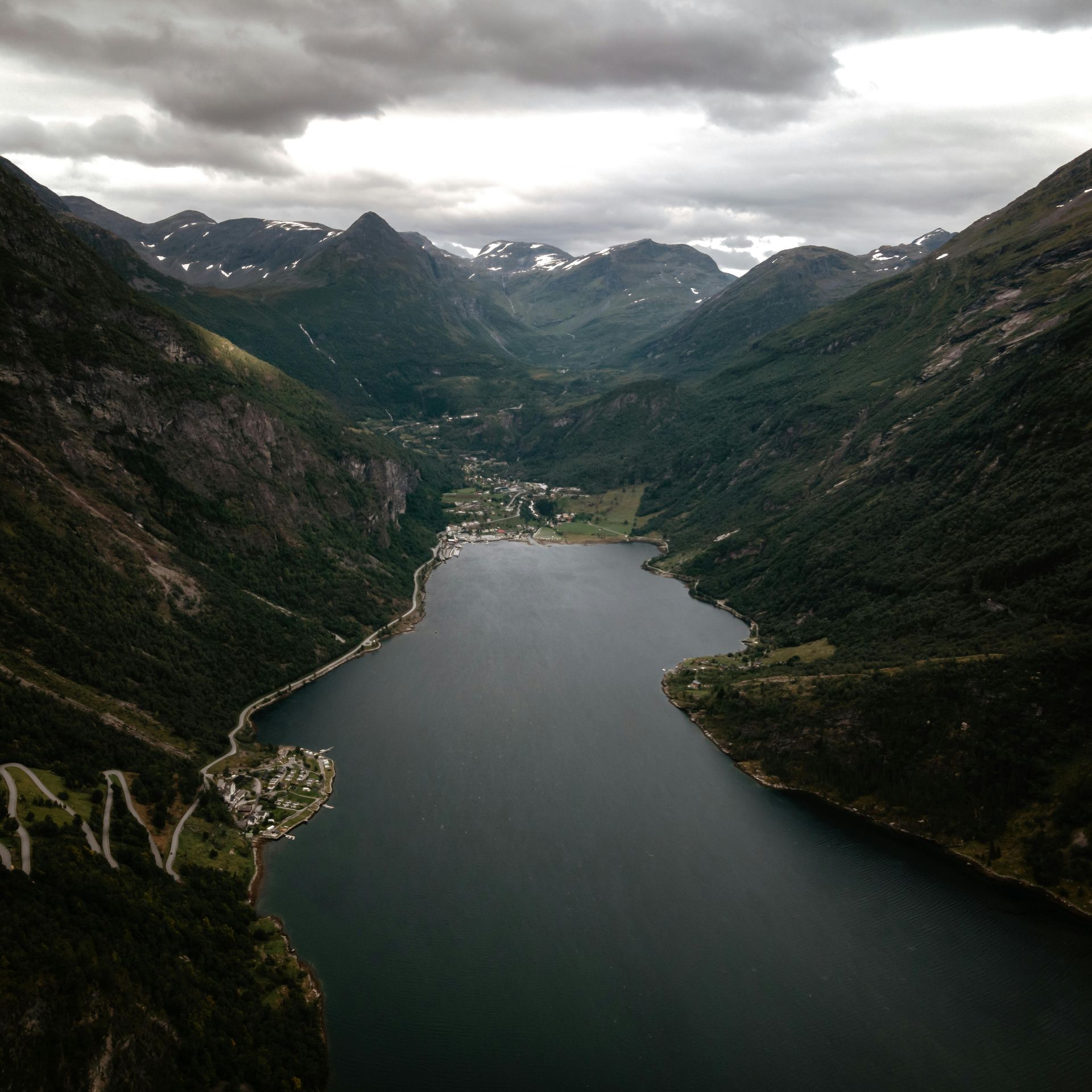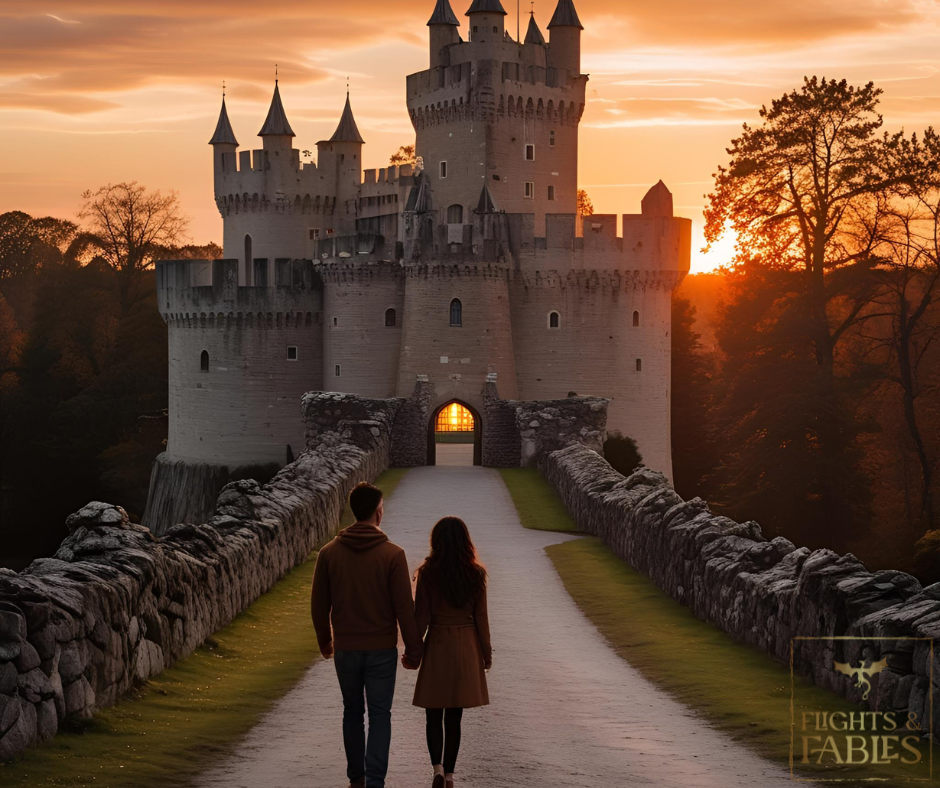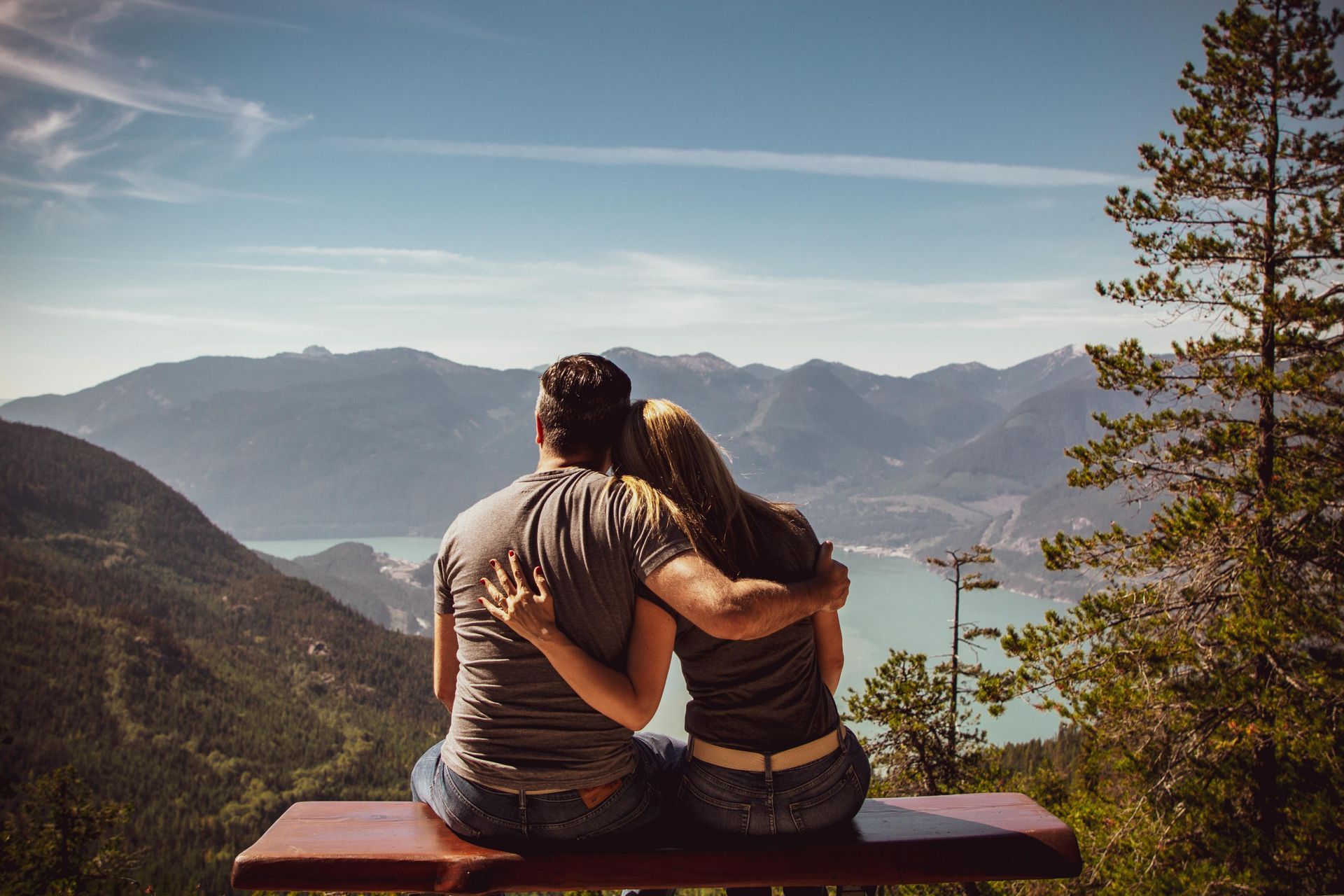Winter Fantasy Escapes: Magical Destinations for the Cold Season
There's something profoundly magical about winter that summer can never replicate. When snow transforms familiar landscapes into otherworldly realms, when the Northern Lights dance across polar skies, when ancient festivals illuminate the longest nights—this is when our world comes closest to the fantasy realms we've only read about.
Winter doesn't just change destinations; it transfigures them. Norway's fjords become frozen passages from Norse mythology. Iceland's volcanic landscapes turn into alien ice worlds. Austrian alpine villages transform into living snow globes straight from fairy tales. Japan's temples and shrines wear mantles of white that amplify their timeless beauty. These aren't just cold-weather vacations—they're journeys into winter's unique magic, where the season itself becomes the main character in your travel story.
For fantasy travelers who crave experiences that blur the line between reality and imagination, winter offers something summer never can: that sense of stepping through the wardrobe into Narnia, of discovering that magic exists just beyond the edge of civilization, of experiencing landscapes so cinematically perfect they don't seem real.
Before we explore these winter fantasy destinations, let's talk about why the cold season creates such extraordinary travel experiences:
Cinematic Transformation:
Snow and ice don't just cover landscapes—they fundamentally transform them. Familiar places become unrecognizable, dramatic, otherworldly. It's like traveling to an entirely different planet without leaving Earth.
Atmospheric Intensity:
Long winter nights, dramatic weather, and the interplay of light and darkness create an atmospheric depth that summer's endless daylight can't match. Every scene feels like it was composed by a cinematographer.
Cultural Authenticity:
Winter festivals, traditions, and celebrations often represent the oldest, most authentic expressions of culture, humanity's ancient response to darkness and cold. These aren't tourist inventions; they're living traditions with centuries of meaning.
Exclusive Experiences:
Many of winter's phenomena, Northern Lights, ice hotels, frozen waterfalls, snow festivals—exist only in this season. You're not choosing between winter and summer versions of the same place; you're accessing entirely different experiences.
Reduced Crowds:
While popular spots still attract visitors, winter naturally filters for those who genuinely want the experience. You'll share these magical places with fellow travelers who chose cold over convenience.
Now, let's journey into winter's most enchanting fantasy destinations.
Norway: Where Norse Legends Meet Arctic Reality
Region:
Northern Norway, especially Tromsø, Lofoten Islands, and Svalbard
Best For:
Northern Lights seekers, Viking culture enthusiasts, Arctic adventurers
Magic Level: ⚔️⚔️⚔️⚔️⚔️
The Winter Magic
Norway in winter feels like stepping directly into the world of Norse mythology. This is the land where Viking sagas were born, where gods walked among frozen peaks, where the boundary between mortal and mythic has always been thin. When winter arrives, that boundary becomes even more permeable.
The Northern Lights, aurora borealis, transform the Arctic sky into a living canvas where green, purple, and red curtains of light dance across the darkness. Ancient Norse people believed these lights were the Bifröst bridge to Asgard, or the reflections of the Valkyries' armor as they guided fallen warriors to Valhalla. Standing beneath them, you understand why they needed mythological explanations.
Norway's polar night (when the sun doesn't rise above the horizon) creates a unique twilight world where time loses meaning. The landscape exists in perpetual blue hour, that magical photographers' moment stretched across weeks. Everything takes on an ethereal quality, as if you're experiencing the world through a dream filter.
Where to Experience Norwegian Winter Magic
Tromsø: Gateway to the Arctic:
Known as the "Paris of the North," Tromsø sits 350 kilometers above the Arctic Circle, making it one of the best locations for Northern Lights viewing. The city combines accessibility (it has an international airport) with genuine Arctic wilderness. Between November and January, the polar night wraps the city in blue twilight, creating an otherworldly atmosphere.
Check current aurora forecasts and travel conditions through Visit Norway to plan your viewing nights strategically.
The Arctic Cathedral, with its distinctive triangular architecture, looks even more striking against winter's dramatic skies. Dog sledding expeditions depart from just outside the city, offering the visceral thrill of mushing through silent forests guided only by your headlamp and the aurora above. Reindeer sledding with indigenous Sámi guides connects you to cultures that have lived in harmony with this harsh environment for millennia.
Lofoten Islands: Fantasy Landscapes Made Real:
The Lofoten archipelago achieves what seems impossible, jagged Alpine peaks rising directly from the sea, fishing villages that look like they were painted by storybook illustrators, and beaches with sand as white as any tropical paradise, except surrounded by snow and ice.
Winter transforms Lofoten into something from a high fantasy novel. The dramatic peaks (some rising over 1,000 meters directly from sea level) catch the low winter light in ways that make them appear to glow from within. Traditional red rorbuer (fishermen's cabins) dot the coastlines, many now converted to accommodations where you can sleep surrounded by this epic scenery.
The light during polar twilight is a photographer's dream, and it lasts for hours. The brief moments when the sun approaches (but doesn't cross) the horizon paint everything in shades of pink, orange, and purple. When the Northern Lights appear over the peaks reflected in the calm Arctic waters, you're witnessing one of Earth's most cinematic natural phenomena.
Svalbard: The Edge of Civilization:
Svalbard, Norway's Arctic archipelago, represents the extreme edge of winter fantasy travel. Located between mainland Norway and the North Pole, it's one of the world's northernmost permanently inhabited places. Polar bears outnumber people. The landscape is 60% glacier. Between November and February, the sun never rises at all.
This is where you truly feel like you've left the normal world behind. The town of Longyearbyen, with its colorful houses against white wilderness, exists in defiance of nature's harshness. Ice cave expeditions take you into blue-lit tunnels inside glaciers. Snowmobile safaris across frozen tundra offer views of arctic foxes, reindeer, and if you're fortunate (and careful), polar bears.
The darkness of polar night here isn't oppressive, it's transformative. The stars shine with intensity impossible in lower latitudes. The Northern Lights have an entire canvas to work with, sometimes filling the entire dome of the sky. This is winter fantasy travel at its most extreme and most rewarding.
Why Fantasy Travelers Love Norwegian Winters
Norway delivers on the promise that our world contains places as epic as any fantasy realm. The connection to Viking culture and Norse mythology runs deep here, these landscapes inspired the stories we still tell. The combination of accessibility (excellent infrastructure) and genuine wilderness (Arctic conditions) means you can experience extreme environments without extreme risk.
Travel Tips
- Best time for Northern Lights: Late September through March, with December-February offering the most darkness
- Best time for landscapes: February-March offers better daylight balance and more stable weather than deep winter
- Northern Lights reality check: Auroras are natural phenomena that depend on solar activity and clear skies. Allow multiple nights in each location to improve your chances
- Essential gear: Layered Arctic-rated clothing, insulated waterproof boots, headlamp, and hand warmers
- Cultural experience: Consider staying with Sámi families or joining reindeer herding experiences for authentic indigenous perspectives
Pro tip:
Book Northern Lights photography workshops led by local experts. They know the best locations, weather patterns, and camera settings, dramatically improving your chances of capturing this phenomenon.
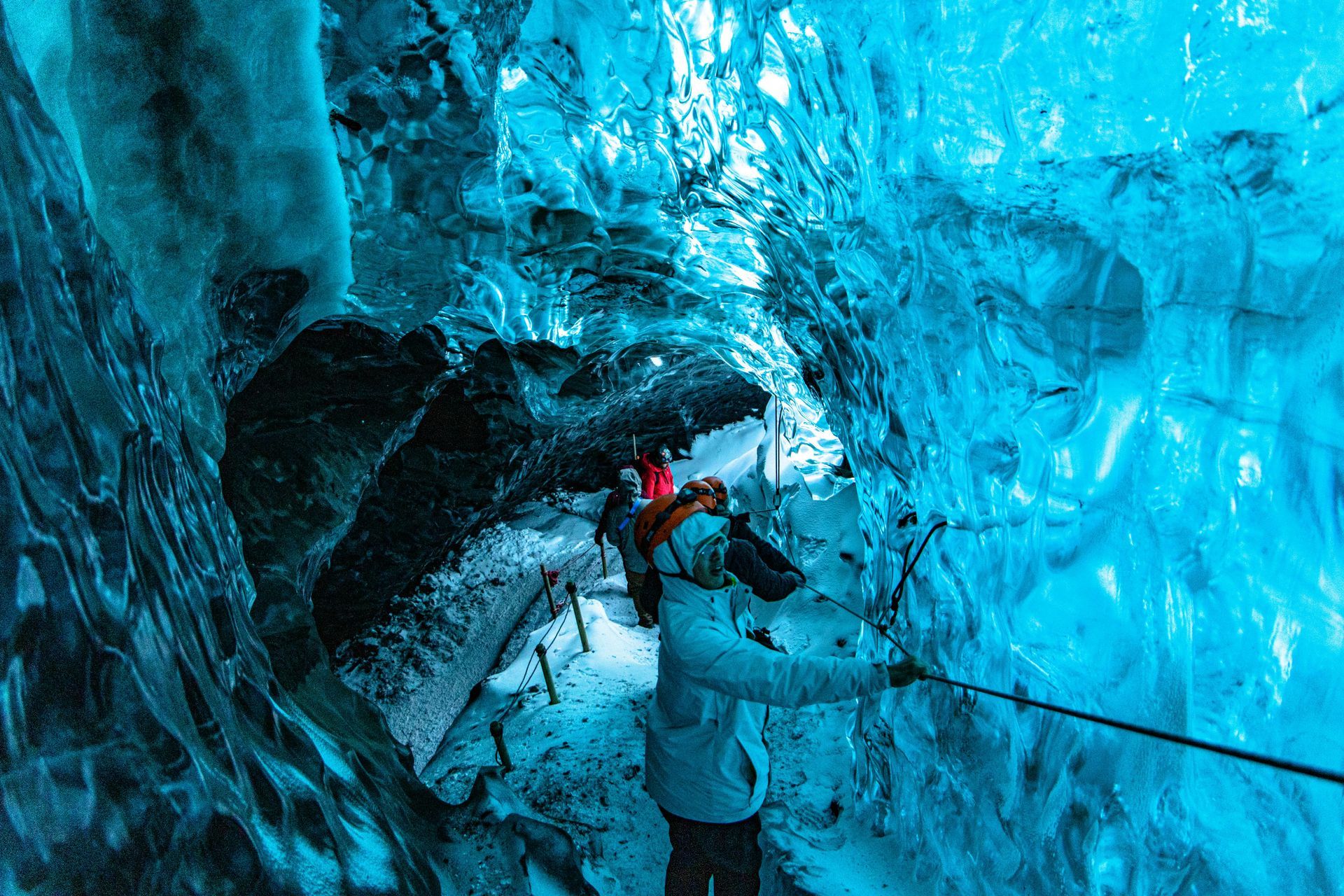
Iceland: The Winter Island of Fire and Ice
Region:
Entire country, especially South Coast, Snæfellsnes Peninsula, and North Iceland
Best For:
Glacier adventurers, ice cave explorers, geothermal enthusiasts
Magic Level: ⚔️⚔️⚔️⚔️⚔️
The Winter Magic
Iceland earns its nickname "Land of Fire and Ice" most dramatically in winter. This is where glaciers meet volcanoes, where steaming geothermal pools contrast with frozen landscapes, where the earth's raw power manifests in ways that make you feel like you're on another planet entirely.
The island's volcanic geology creates landscapes that look extraterrestrial even in summer. In winter, they become utterly alien. Black sand beaches against white snow. Ice formations around waterfalls that freeze mid-cascade. Steam rising from hot springs in sub-zero temperatures. Crystal blue ice caves that exist only during winter months, formed inside glaciers by summer's meltwater and only accessible when winter freezes them solid.
Iceland's winter light, or frequent lack thereof, adds to the otherworldly atmosphere. While not as extreme as Norway's polar night, Iceland's December days offer only 4-5 hours of daylight, most of it the golden/blue hour that photographers crave. Storms roll in with dramatic intensity, transforming conditions in minutes. You learn to appreciate weather's power in ways that temperate climates never teach.
Where to Experience Icelandic Winter Magic
Vatnajökull Ice Caves:
These natural ice caves form within Europe's largest glacier, Vatnajökull, and exist only in winter when the glacier's internal structure stabilizes. The experience of entering these caves is genuinely transformative, you're walking inside a glacier, surrounded by walls of crystal blue ice that formed from snow that fell centuries ago.
The ice's blue color comes from the glacier compressing air bubbles out of the snow, creating ice so dense it absorbs red light and reflects blue. The effect is like being inside a living sapphire. Light filters through the ice from above, creating an ethereal glow. Each cave is unique, formed by the specific patterns of summer meltwater, and they change or disappear annually, making each winter's caves one-of-a-kind experiences.
These caves require guided tours (dangerous to access independently) and weather permitting (access roads can close in storms). Learn more about ice cave access and safety through Guide to Iceland's official resources. But the effort pays off, this is one of Earth's most otherworldly accessible experiences..
Jökulsárlón Glacier Lagoon & Diamond Beach:
The glacier lagoon where icebergs calve off Breiðamerkurjökull glacier and float toward the sea becomes even more dramatic in winter. The icebergs, some the size of buildings, thousands of years old, create a constantly shifting seascape of blue and white. Seals often rest on the ice, and the Northern Lights frequently appear above this surreal landscape.
Diamond Beach, where icebergs wash up on black sand, gets its name from how these chunks of glacial ice look like enormous diamonds scattered across dark sand. Winter's lower light angle makes them sparkle even more intensely. The contrast of crystalline ice against volcanic sand creates one of the world's most photographed (and photogenic) locations.
Geothermal Experiences:
Iceland's geothermal activity becomes even more magical in winter. The Blue Lagoon, Iceland's most famous geothermal spa—offers the surreal experience of bathing in 37-39°C (98-102°F) water while air temperatures hover near or below freezing. Steam rises dramatically around you, creating a mystical atmosphere.
For less touristy options, the Mývatn Nature Baths in North Iceland offer similar experiences with fewer crowds and equally dramatic volcanic landscapes. Secret Lagoon in Flúðir provides a more rustic experience in a natural hot spring pool where you can watch geysers erupt nearby while you soak.
Snæfellsnes Peninsula: Iceland in Miniature:
This western peninsula is called "Iceland in miniature" because it contains most of the country's landscape types in a compact area. The Snæfellsjökull glacier (which inspired Jules Verne's "Journey to the Center of the Earth") dominates the peninsula. In winter, the area transforms into a fantasy landscape where black cliffs, frozen waterfalls, and snow-covered lava fields create dramatic contrasts.
The peninsula receives fewer visitors than the South Coast in winter, offering more solitude. Kirkjufell mountain, one of Iceland's most photographed peaks, takes on added drama with winter snow, especially when Northern Lights dance above it.
Reykjavik in Winter:
Iceland's capital city embraces winter with style. The Harpa Concert Hall, with its geometric glass facade, reflects winter light (and Northern Lights) in spectacular ways. The city's café culture thrives in winter, cozy spaces where locals practice the concept of "going Icelandic" (embracing rather than avoiding winter).
The city serves as base camp for winter adventures while offering excellent restaurants (try Icelandic lamb and fresh seafood), museums exploring Viking history and folklore, and easy Northern Lights viewing from the Old Harbor when conditions cooperate.
Why Fantasy Travelers Love Icelandic Winters
Iceland feels like a location scout's dream come true for fantasy films, because it is. The landscapes look CGI-enhanced even though they're completely real. The combination of volcanic geology, glaciers, and dramatic weather creates continuously changing scenery that never feels mundane. Accessibility is excellent (good roads, English widely spoken, strong tourist infrastructure) while still delivering genuine wilderness experiences.
Travel Tips
- Best time to visit: November-March for ice caves and best winter conditions; February-March for improving weather and daylight
- Ice cave bookings: Book glacier and ice cave tours weeks or months in advance, popular tours sell out
- Weather flexibility: Build flexibility into your itinerary. Winter storms can close roads and cancel tours with little notice
- Ring Road in winter: The Route 1 ring road is maintained year-round, but winter driving requires 4WD vehicles, studded tires, and experience with snow/ice conditions
- Northern Lights apps: Download aurora forecast apps (like "My Aurora Forecast") to maximize your viewing opportunities
Pro tip:
Consider staying in the countryside rather than just Reykjavik. Accommodations like Hotel Rangá, Ion Adventure Hotel, or countryside guesthouses offer darker skies for Northern Lights viewing and wake-up calls when auroras appear.
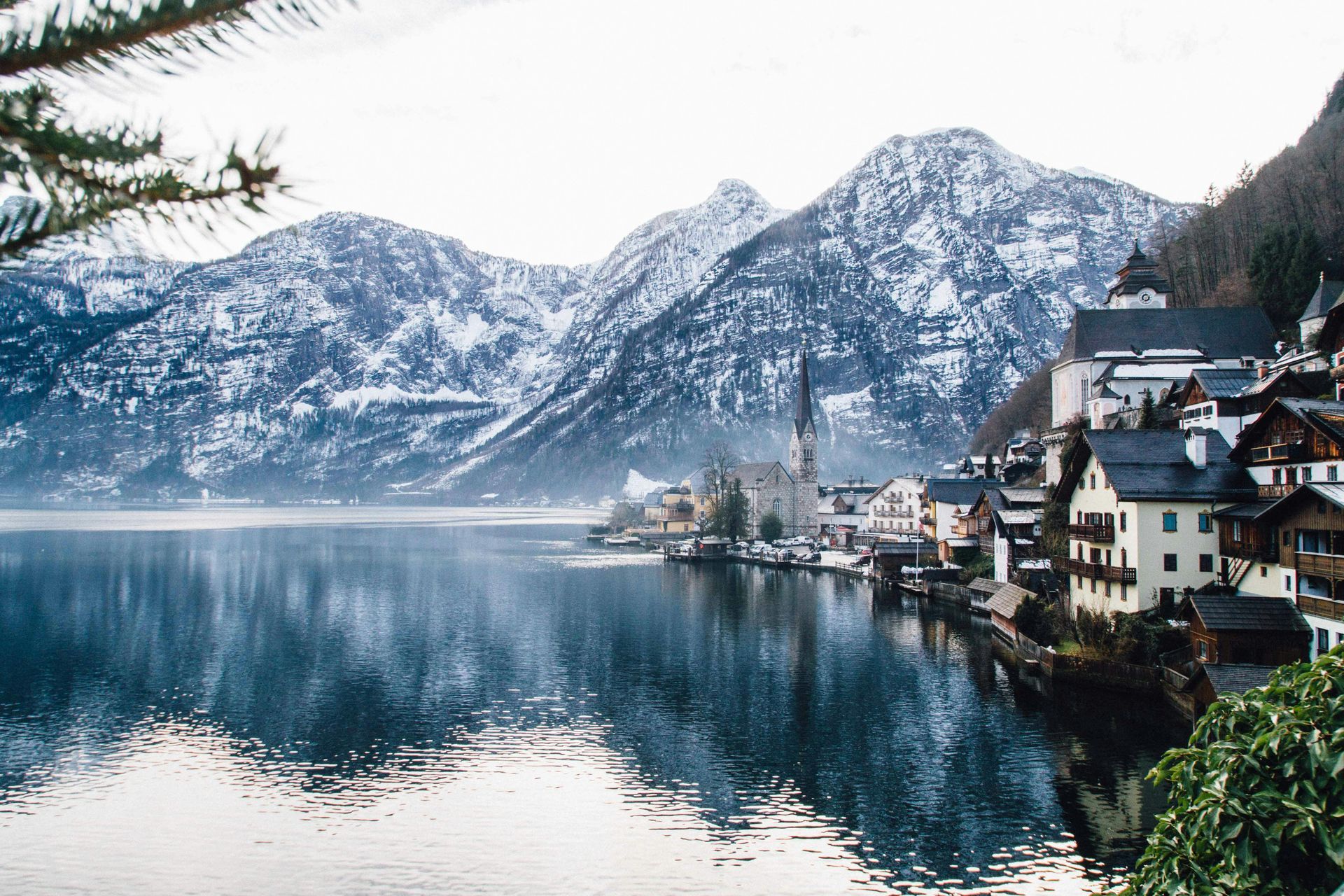
Austria: Alpine Fairy Tales Come to Life
Region:
Salzburg, Innsbruck, Hallstatt, and the Austrian Alps
Best For:
Christmas market lovers, alpine skiing enthusiasts, Sound of Music fans
Magic Level: ⚔️⚔️⚔️⚔️
The Winter Magic
Austria in winter delivers the alpine fantasy you've seen in countless films and imagined from fairy tales. This is where snow-covered villages nestle in mountain valleys, where baroque architecture wears mantles of white, where Christmas markets transform medieval city squares into living celebrations of winter's beauty.
Unlike the raw, wild magic of Norway and Iceland, Austria offers refined, cultivated winter enchantment. Centuries of alpine culture have created traditions and aesthetics that embrace rather than merely endure winter. The result is places that look too perfect to be real, except they are real, and you can walk through them sipping Glühwein while snow falls softly on medieval rooftops.
The Austrian Alps provide a dramatic backdrop that gives every scene cinematic weight. Whether you're exploring cities or villages, these mountains loom in the background, reminding you that civilization here exists in constant dialogue with nature's grandeur.
Where to Experience Austrian Winter Magic
Hallstatt: The Village Too Beautiful to Be Real:
Hallstatt might be the world's most photographed village, and winter makes it even more breathtaking. Perched on the shore of Hallstätter See with mountains rising dramatically behind, the village's 16th-century Alpine houses create reflections in the still lake water. In winter, snow transforms it into a living Christmas card.
The village's relative inaccessibility (narrow mountain roads) keeps crowds manageable in winter compared to summer's crush. Walk through silent streets where wood smoke rises from chimneys, explore the ancient salt mines that gave the village its wealth, or take the funicular to the Skywalk viewpoint for perspective on this impossibly picturesque setting.
Salzburg: Mozart, Christmas Markets, and Alpine Elegance:
Salzburg combines baroque architecture, classical music heritage, and alpine setting into one of Europe's most elegant winter destinations. The Hohensalzburg Fortress, perched above the Old Town, overlooks the city and surrounding Alps with commanding presence.
The city's Christmas markets (late November through December) rank among Europe's finest. The Christkindlmarkt in the Residenzplatz, framed by baroque buildings and the cathedral, creates a atmosphere where centuries seem to dissolve. Stalls selling handcrafted ornaments, roasted chestnuts, and Mozartkugel (Mozart balls, the chocolate confection, not anything weird) spread throughout the pedestrian Old Town.
Beyond Christmas season, winter in Salzburg means concerts in venues where Mozart actually performed, coffee houses serving Sachertorte and Melange (Austrian coffee), and walks along the snow-dusted Salzach River. The city's Sound of Music locations become even more atmospheric under snow, yes, it's touristy, but the landscapes are genuinely beautiful.
Innsbruck: Where City Meets Alpine Wilderness:
Innsbruck offers something unique: a proper city (capital of Tyrol) surrounded directly by dramatic mountains. The Nordkette mountain range rises directly from the city's edge, accessible via funicular. You can have breakfast in a historic café and be skiing above treeline within an hour.
The Old Town's medieval and baroque architecture (especially the famous Golden Roof) creates atmospheric wandering territory. Christmas markets fill the Maria-Theresien-Straße with lights and traditions. But Innsbruck's real magic comes from how quickly you can transition from urban sophistication to alpine wilderness.
Alpine Villages: Authentic Mountain Life:
Beyond the famous destinations, Austria's smaller alpine villages offer the winter fantasy without crowds. Places like Alpbach (voted Austria's most beautiful village), Zell am See (on a pristine mountain lake), and the villages of the Zillertal valley deliver authentic alpine experiences where local culture remains vibrant.
These villages offer family-run hotels, traditional Tyrolean architecture, excellent skiing (often less crowded than mega-resorts), and the kind of winter atmosphere where you can actually imagine living the alpine life rather than just visiting it.
The Großglockner High Alpine Road:
While partially closed in deep winter, this spectacular mountain road offers limited winter access and stunning views of Austria's highest peak (3,798m). Even if you can't drive the full route, the lower sections accessible in winter provide dramatic alpine scenery with far fewer visitors than summer brings.
Why Fantasy Travelers Love Austrian Winters
Austria offers winter fantasy at human scale. Unlike the extreme wilderness of Norway and Iceland, Austrian winter magic exists in harmony with civilization. You can experience dramatic alpine landscapes, then return to comfortable hotels, excellent restaurants, and warm cafés. It's fantasy travel that doesn't require you to be an extreme adventurer, though opportunities for that exist too.
Travel Tips
- Best time for Christmas markets: Late November through December 24 (most close Christmas Eve)
- Best time for winter landscapes: January-February for reliable snow, February-March for improving weather and longer days
- Skiing vs. sightseeing: Designate some days for each, Austrian ski resorts are excellent, but there's much to experience beyond slopes
- Public transportation: Austria's trains are excellent and scenic; consider rail passes rather than driving in winter conditions
- Regional specialties: Try Wiener Schnitzel, Tafelspitz, Kaiserschmarrn, and various regional cheese specialties
Pro tip:
The Austrian Alps Card (available in some regions) provides access to multiple ski areas, mountain railways, and attractions. If you're doing multiple activities, it can provide significant savings.
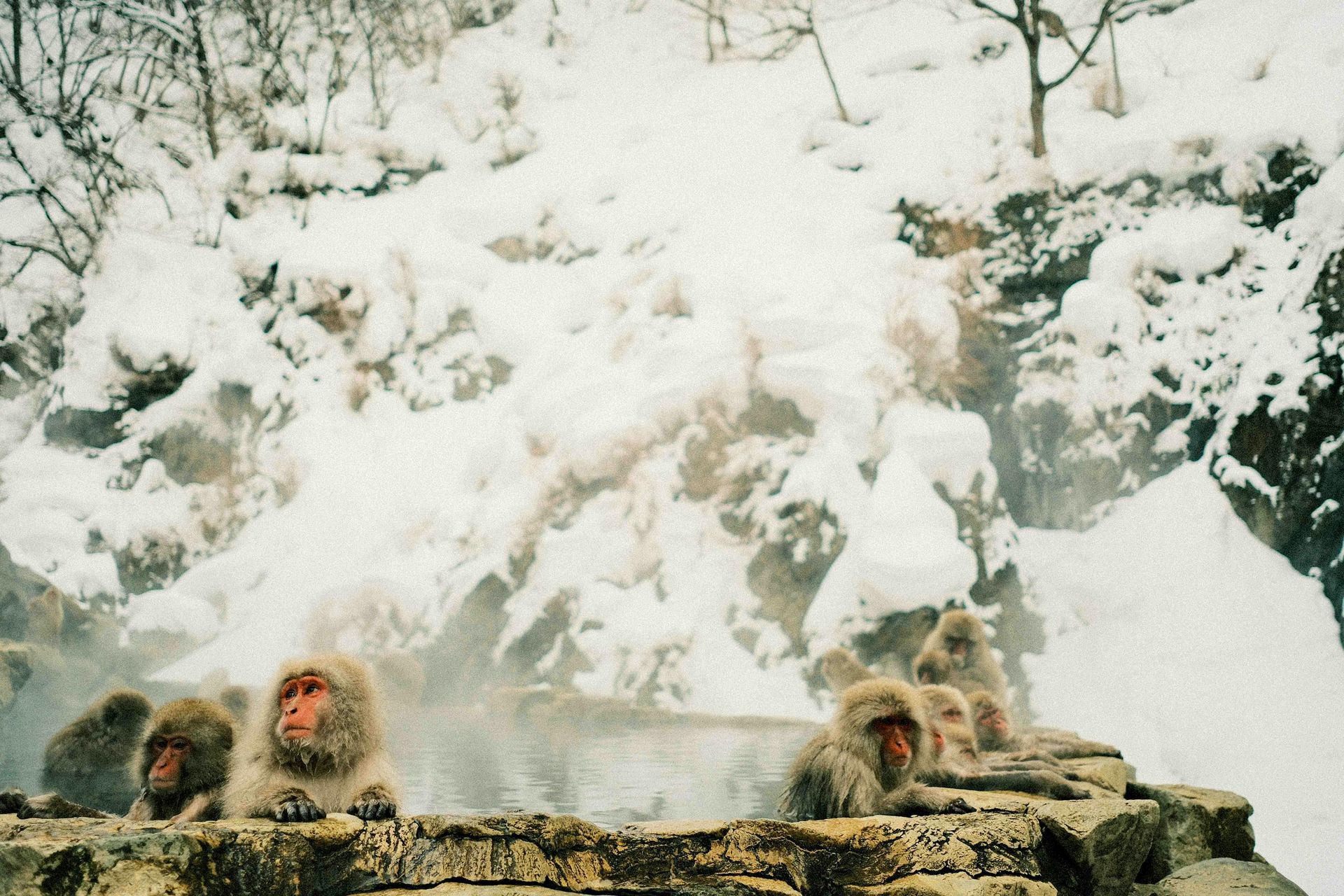
Japan: Where Ancient Tradition Meets Winter Wonder
Region:
Hokkaido, Japanese Alps, and traditional onsen towns
Best For:
Hot spring enthusiasts, snow festival lovers, cultural immersion seekers
Magic Level: ⚔️⚔️⚔️⚔️⚔️
The Winter Magic
Japan in winter reveals a side of the country that surprises travelers expecting only cherry blossoms and autumn leaves. Japanese culture has refined winter aesthetics over centuries, finding beauty in snow's simplicity, celebrating light during darkness, and creating rituals that transform cold months into seasons of contemplation and wonder.
The Japanese concept of mono no aware (the pathos of things, the beauty of impermanence) finds perfect expression in winter. Snow-covered temples embody Buddhist principles of transience. Steam rising from onsen (hot springs) creates fleeting beauty that exists only in that moment. Winter illuminations transform darkness into celebration rather than something to merely endure.
Japan's winter festivals, especially the Sapporo Snow Festival, combine artistic excellence with cultural celebration in ways found nowhere else. Massive snow and ice sculptures display technical mastery while maintaining traditional aesthetic values. It's blockbuster spectacle with refinement and meaning.
Where to Experience Japanese Winter Magic
Hokkaido: Japan's Winter Wonderland:
Japan's northernmost main island receives serious snowfall, often meters of the light, dry powder that skiers dream about. Hokkaido combines winter sports excellence with cultural experiences in proportions found nowhere else.
Sapporo, the capital, hosts one of the world's great winter festivals. For one week in February, the Sapporo Snow Festival transforms the city into a wonderland of massive snow and ice sculptures. These aren't simple snowmen, they're architectural-scale replicas of famous buildings, detailed anime characters, and pure artistic abstractions, some over 15 meters high. Night illuminations make them even more spectacular.
Beyond Sapporo, Niseko has become internationally famous for powder skiing that rivals anywhere on Earth. The snow quality, light, dry, and abundant, combined with excellent infrastructure creates winter sports heaven. But even non-skiers love Niseko for its onsen (natural hot springs), mountain views, and fusion of Japanese hospitality with international accessibility.
Snow Monkeys: Wildlife in Winter:
The Japanese macaques (snow monkeys) of Jigokudani Monkey Park near Nagano have become international icons. These wild monkeys discovered the warm comfort of natural hot springs and now spend winter days soaking in steaming water while snow falls around them.
Watching them bathe, their fur rimed with ice, their faces showing what appears to be contentment, provides one of wildlife viewing's most charming experiences.
The park requires a brief snow-covered hike through forest, adding to the adventure. The monkeys are wild and habituated to humans but not tame, you're entering their world. Photographers love this location, as the combination of snow, steam, and expressive monkey faces creates endlessly compelling images.
Shirakawa-go: Gassho-Zukuri in Snow:
This
UNESCO World Heritage village preserves traditional gassho-zukuri farmhouses, massive thatched-roof structures designed to shed heavy snow. The name means "constructed like hands in prayer," referring to the steep roof angle.
In winter, especially during special illumination nights (a few evenings in January-February), Shirakawa-go becomes transcendently beautiful. Snow covers everything, the thatched roofs bear thick white mantles, and warm light glows from windows. The illumination events, when the village is lit up after dark, create scenes that look painted rather than photographed.
The villages are working communities, not theme parks. You can stay overnight in some farmhouses (book far in advance), experiencing traditional Japanese hospitality while surrounded by winter's beauty.
Onsen Culture: Hot Springs in Snow:
Japanese onsen (hot springs) exist throughout the country, but experiencing them in winter adds magical contrast, the pleasure of hot water while snow falls into the pool, steam rising into cold air, the sensation of complete relaxation in harsh conditions.
Hakone, near Mt. Fuji, offers numerous onsen resorts with views of the iconic mountain (weather permitting). Kusatsu Onsen in Gunma Prefecture is one of Japan's premier hot spring towns, with yubatake (hot water fields) steaming dramatically in winter air. Ginzan Onsen in Yamagata Prefecture became famous as the inspiration for the bathhouse in Spirited Away, especially atmospheric with snow and traditional architecture.
Winter Illuminations:
Japanese cities embrace winter illumination festivals that transform urban spaces into wonderlands of light. Tokyo's various illumination events (including Tokyo Midtown, Roppongi Hills, and Marunouchi) create sophisticated light displays that emphasize aesthetics over mere spectacle.
Nabana no Sato in Mie Prefecture hosts one of Japan's largest illumination events, with millions of LED lights creating tunnels of color, animated displays, and artistic installations. It's winter celebration taken to extreme levels while maintaining Japanese aesthetic sensibilities.
Japanese Alps & Traditional Villages:
The Japanese Alps receive heavy snowfall that creates landscapes reminiscent of the Swiss Alps but with distinctly Japanese architecture and culture. Towns like Takayama maintain Edo-period streetscapes that look especially atmospheric under snow.
Mountain temples and shrines take on special beauty in winter. The contrast of dark wood, white snow, and vivid vermillion paint creates stark visual impact. Many temples offer special winter experiences, from meditation sessions to seasonal festivals.
Why Fantasy Travelers Love Japanese Winters
Japan delivers winter experiences found nowhere else, the combination of natural beauty, refined aesthetics, and deep cultural meaning creates something special. For travelers interested in Japanese culture, anime, and pop culture, winter adds dimensions these interests rarely highlight. The infrastructure is excellent, the safety level is high, and the hospitality is legendary, making it accessible for travelers of all experience levels.
Travel Tips
- Best time to visit: Late January through February for snow festivals and reliable snow; December for winter illuminations and New Year traditions
- Snow festival timing: Sapporo Snow Festival is typically the first or second week of February, book accommodations months in advance
- JR Pass Value: The Japan Rail Pass is excellent value if you're visiting multiple regions; calculate whether it saves money for your specific itinerary. But in my experience, you need to calculate your routes to know your savings.
- Onsen etiquette: Learn basic onsen rules (shower before entering, no swimsuits, tattoos may be prohibited). Many places now offer private onsen for those uncomfortable with communal bathing
- Winter clothing: Japanese buildings often have less central heating than Western expectations, dress in layers even indoors
Pro tip:
Combine winter sports with cultural experiences. Spend mornings skiing Hokkaido powder, afternoons in onsen, and evenings exploring local cuisine. Japan excels at multi-dimensional experiences rather than single-focus tourism.
Planning Your Winter Fantasy Escape
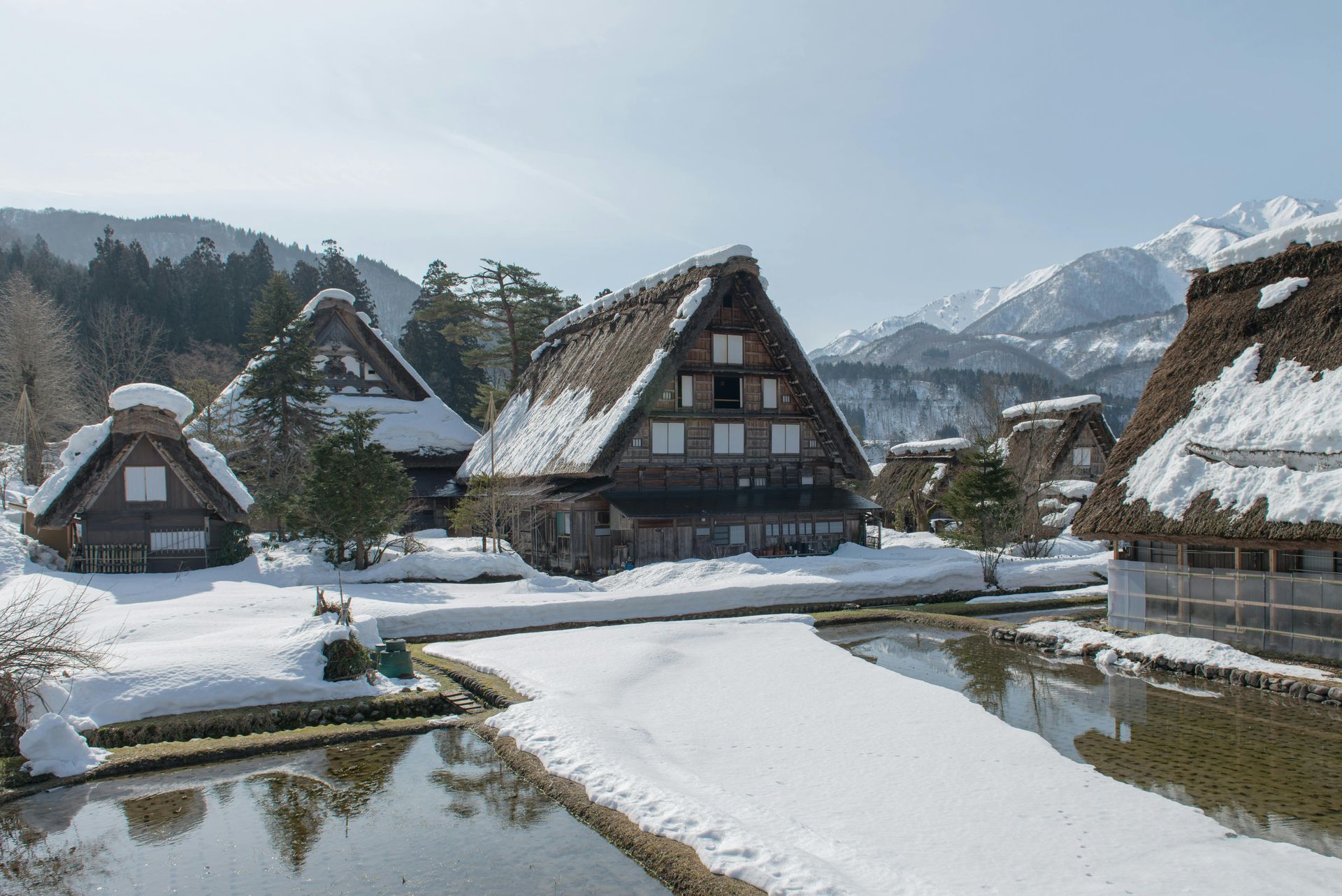
Multi-Destination Winter Itineraries
The Ultimate Northern Lights Journey (14-21 days):
- Start: Tromsø, Norway (4-5 days) for aurora viewing and Arctic experiences
- Lofoten Islands (3-4 days) for dramatic landscapes and photography
- Iceland (7-10 days) for ice caves, glaciers, and varied winter landscapes
- Return flights: Often most convenient through Reykjavik
Alpine & Cultural Winter Explorer (14 days):
- Start: Salzburg, Austria (3-4 days) for Christmas markets and baroque elegance
- Austrian Alps villages (3 days) for skiing/winter hiking and alpine culture
- Hallstatt (2 days) for iconic village photography and history
- Munich/Bavaria extension (3 days) for German Christmas markets and castles
- Swiss Alps (optional 3-4 days) for Zermatt, Interlaken, or Jungfrau region
Japanese Winter Immersion (14-18 days):
- Start: Tokyo (3-4 days) for urban winter experiences and day trips
- Japanese Alps (3 days) for Takayama, Shirakawa-go, snow monkeys
- Hokkaido (5-7 days) for Sapporo Snow Festival, Niseko skiing, and onsen
- Return: Hakone/Mt. Fuji area (2 days) for onsen and mountain views
The Full Winter Fantasy Grand Tour (21-28 days):
- Week 1: Norway (Tromsø and Lofoten)
- Week 2: Iceland (full ring road or focused itinerary)
- Week 3: Austria and Bavaria
- Optional Week 4: Add Japan or extend any region
Best Timing for Winter Fantasy Travel
December (Holiday Magic):
- Pros: Christmas markets at peak, holiday atmosphere, New Year traditions (especially in Japan), often good snow conditions
- Cons: Higher prices, more crowds, some attractions crowded or closed during holidays
- Best for: Christmas market enthusiasts, cultural festivals, holiday atmosphere
January-February (Peak Winter):
- Pros: Best snow conditions, Northern Lights viewing, Sapporo Snow Festival (early Feb), authentic winter landscapes, fewer tourists after early January
- Cons: Coldest temperatures, shortest days (especially in Arctic), some attractions have reduced hours
- Best for: Northern Lights seekers, snow sports, ice cave access, winter photography
March (Extended Winter):
- Pros: Improving weather, longer days, still good snow, lower prices, spring skiing (excellent conditions)
- Cons: Snow becoming unreliable in lower elevations, some winter-specific attractions closing
- Best for: Balancing winter experiences with better weather, budget-conscious travelers, photography (interesting light)
Practical Winter Fantasy Travel Considerations
Packing Essentials:
- Layering system: Base layers (merino wool or synthetic), insulating mid-layers, waterproof/windproof outer layers
- Accessories: Insulated waterproof gloves, warm hat covering ears, neck gaiter/balaclava, quality sunglasses (snow glare), lip balm, hand warmers
- Footwear: Insulated waterproof boots with good traction; consider attachable traction devices (like YakTrax) for icy conditions
- Tech protection: Extra batteries (cold drains them quickly), insulated camera bag, touch-screen compatible gloves
- Health items: High-SPF sunscreen (snow reflection intensifies UV), moisturizer (cold air is drying)
Photography Tips:
- Battery management: Cold drains batteries fast, keep spares warm against your body
- Condensation prevention: When going from cold to warm, keep camera in sealed bag until it reaches room temperature
- Northern Lights settings: Manual mode, 15-30 second exposures, f/2.8 or wider, ISO 800-3200, sturdy tripod essential
- Snow exposure: Meter for snow (which cameras often underexpose), or set exposure compensation +1 to +2
- Golden hour extended: Winter's low sun angle means magic light lasts much longer than summer
Health & Safety:
- Hypothermia awareness: Know symptoms (intense shivering, confusion, fumbling hands, slurred speech)
- Frostbite prevention: Cover all exposed skin in extreme cold, especially ears, nose, cheeks, fingers
- Avalanche awareness: If backcountry skiing/snowshoeing, take avalanche safety courses and never go alone
- Northern driving: If driving in winter conditions, ensure 4WD/AWD vehicle, winter/studded tires, emergency supplies (blanket, food, water, flashlight)
- Altitude considerations: Some destinations (Austrian Alps, Japanese Alps) involve altitude, acclimatize gradually
Booking Strategy:
- Early planning: Winter fantasy destinations, especially Northern Lights locations and Sapporo during Snow Festival, book up months in advance
- Flexible dates: Northern Lights and weather-dependent experiences benefit from flexible itineraries that can adjust to conditions
- Activity booking: Book ice cave tours, Northern Lights tours, and popular winter activities ahead, they sell out and have limited daily spots
- Accommodation location: For Northern Lights viewing, prioritize rural locations with dark skies over convenient city hotels
Budget Considerations:
- Peak season pricing: December (especially Christmas/New Year) and February (Snow Festival) command premium prices
- Transportation costs: Winter destinations often require multiple flights, rental cars with winter packages, or specialized transport
- Activity expenses: Northern Lights tours, ice cave tours, ski lift passes, and specialized winter activities add significant costs
- Gear rental: If you don't own cold-weather gear, factor in rental costs or purchase expenses
- Value periods: Late January (after New Year) and March often offer better prices while maintaining winter conditions
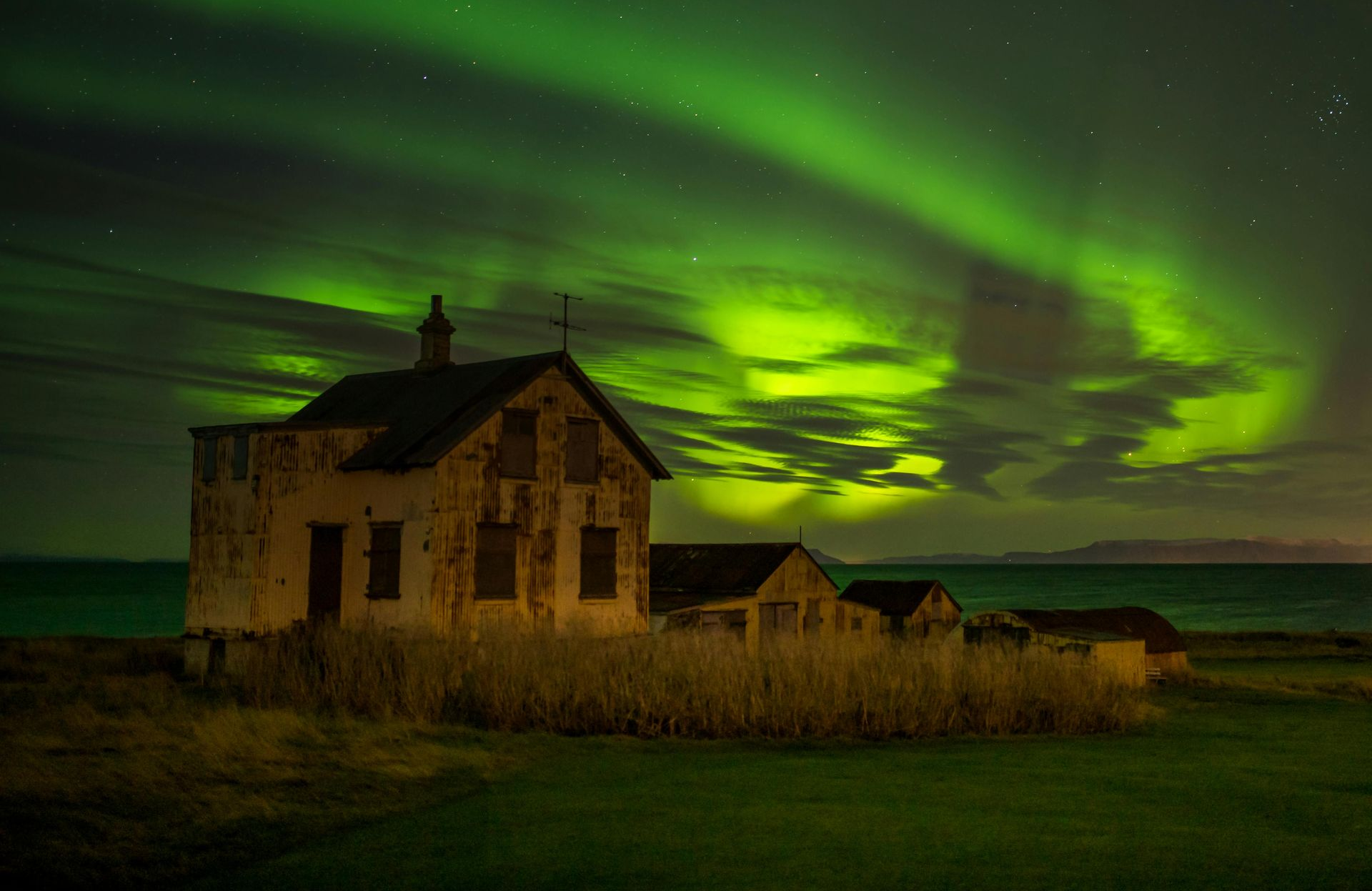
The Deeper Magic of Winter Fantasy Travel
Winter transforms our relationship with travel itself. Summer destinations offer accessibility, ease, comfort, winter demands something more from travelers. You must prepare more carefully, adapt to changing conditions, and accept that nature sets the schedule, not you. In return, winter offers rewards that fair-weather travel can never provide.
There's an intimacy to winter travel that summer crowds dilute. When you share a Northern Lights viewing with a handful of other travelers, all of you silent in the cold, watching the sky come alive, that's connection forged by shared experience rather than mere proximity. When you soak in a Japanese onsen while snow falls around you, you're participating in a tradition refined over centuries. When you walk through a deserted Austrian alpine village at dawn, fresh snow muffling sound, you experience places without the mediation of mass tourism.
Winter fantasy travel also connects us to something primal. Despite our technological cocoon, despite climate control and modern convenience, winter still demands respect. Standing under the Northern Lights in sub-zero temperatures, hiking across Icelandic glaciers, or navigating Norwegian mountain roads in winter conditions, these experiences remind us that we're small, that nature remains powerful, and that this tension creates genuine adventure.
The fantasy elements of these destinations become more pronounced in winter. Norway's landscapes don't just look like they could contain Norse gods, they look like they might actually contain them right now. Iceland's winter terrain doesn't simply resemble alien worlds, it genuinely feels like you've left Earth. Japan's snow-covered temples don't just evoke ancient spirituality, they create conditions where you understand why humans developed spiritual responses to nature's beauty.
For fantasy travelers, winter offers what we've always sought: proof that our world contains wonders equal to any imagined realm. You don't need CGI or special effects when nature provides the Northern Lights. You don't need elaborate sets when Iceland's landscapes create their own otherworldly drama. You don't need fantasy authors to invent winter kingdoms when Austria's alps exist in reality.
These winter fantasy escapes aren't just vacations, they're chapters in your own story where you became the adventurer, the explorer, the person who chose challenge over convenience and discovered that magic exists, not in spite of our world, but woven through it like aurora through polar skies.
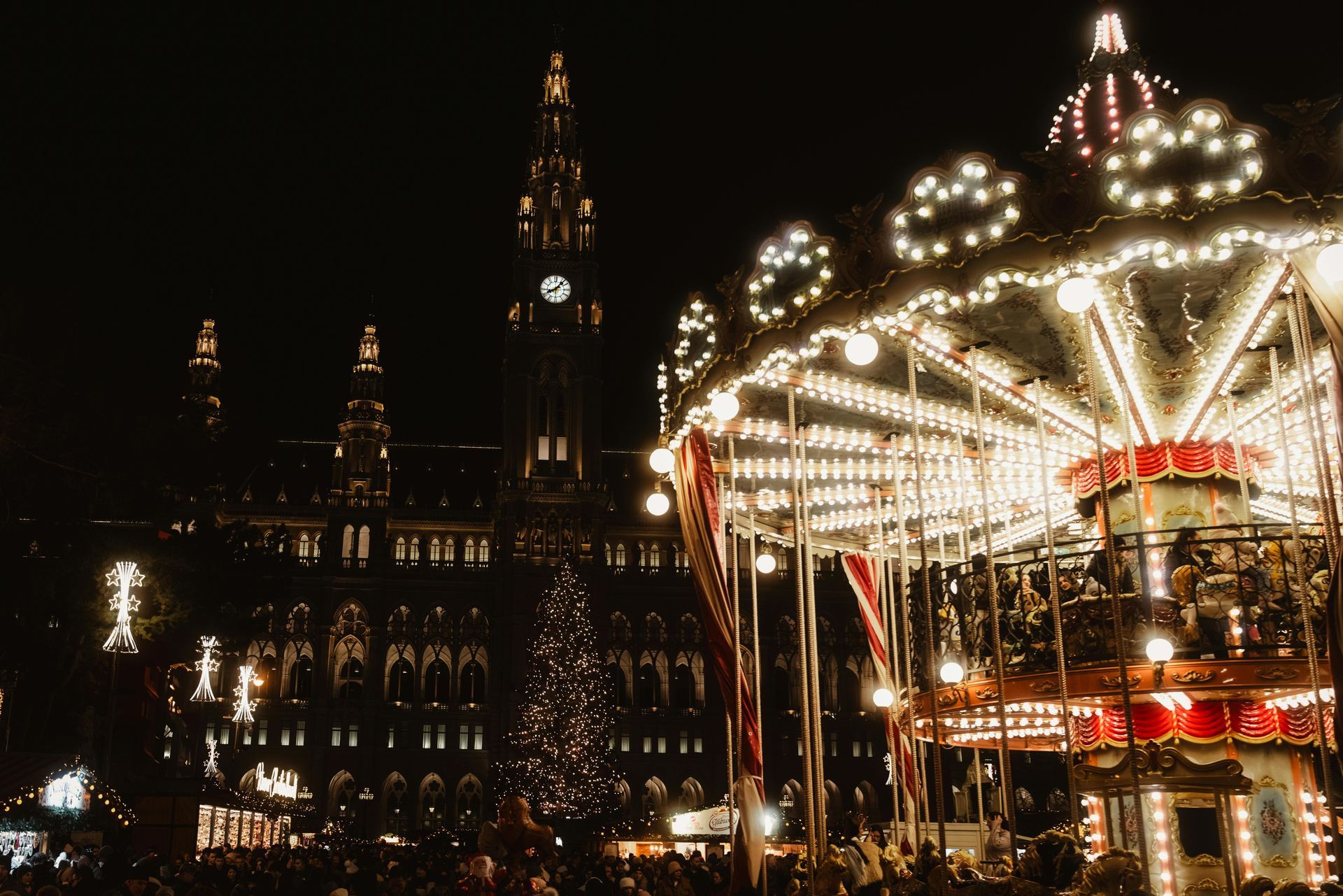
Ready to Experience Your Winter Fantasy Escape?
Whether you're drawn to Norway's Northern Lights and Viking heritage, Iceland's otherworldly glaciers, Austria's alpine elegance, or Japan's refined winter traditions, these destinations offer experiences that transcend typical tourism. Winter doesn't just change these places, it reveals their true magic.
At Flights & Fables, I specialize in creating winter fantasy travel experiences that balance adventure with accessibility, delivering authentic encounters with winter's magic while handling the complex logistics that cold-season travel requires. From arranging Northern Lights photography guides to securing accommodations in remote locations, from coordinating winter activities to building in weather contingencies, I handle the details so you can focus on experiencing the wonder.
Let's plan your winter fantasy escape. Book a discovery call to start designing your journey through winter's most magical destinations.
Ready to explore more seasonal fantasy destinations? Check out our guides to
Seven Days in Japan,
Japanese anime and pop culture destinations, and
fantasy travel experiences around the world.
